Table of content
Introduction
Crispy green peppers, with their vibrant color, refreshing crunch, and mildly sweet flavor, are a beloved addition to countless dishes across the globe. Whether stir-fried, roasted, grilled, or deep-fried, achieving that coveted texture—a tender interior paired with a satisfyingly crisp exterior—requires technique, patience, and an understanding of the science behind cooking vegetables. This article delves into the nuances of preparing green peppers to perfection, exploring everything from ingredient selection to advanced cooking methods. By the end, you’ll be equipped to transform this humble vegetable into a star ingredient that elevates meals from ordinary to extraordinary.
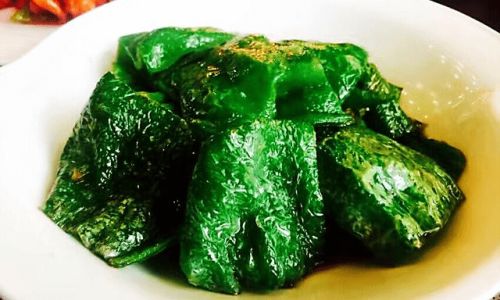
Chapter 1: Understanding Green Peppers
1 Varieties of Green Peppers
Green peppers belong to the Capsicum annuum species and are harvested in their immature stage, which explains their bright hue and slightly bitter taste compared to their ripened counterparts (red, yellow, or orange peppers). Common varieties include:
- Bell Peppers: Thick-walled, blocky, and mild in flavor.
- Jalapeños: Smaller, spicier, and often used in Mexican and Tex-Mex cuisines.
- Poblano Peppers: Mildly spicy with a smoky undertone when roasted.
For crispy textures, bell peppers are ideal due to their sturdy flesh and low moisture content. However, jalapeños can also be crisped using specific techniques, such as quick pickling or high-heat searing.
2 Nutritional Profile
Green peppers are low in calories (about 30 calories per medium pepper) and rich in vitamins A, C, and K, as well as antioxidants like lutein and zeaxanthin. Their crispiness isn’t just a culinary perk—it also preserves more nutrients during cooking compared to overcooked, mushy vegetables.
Chapter 2: Selecting and Prepping Green Peppers
1 Choosing the Freshest Peppers
At the grocery store or farmers’ market, look for:
- Firmness: Gently squeeze the pepper; it should feel taut and unyielding.
- Glossy Skin: Avoid peppers with wrinkles, soft spots, or discoloration.
- Stem Integrity: A fresh green stem indicates recent harvesting.
2 Washing and Drying
Rinse peppers under cool water to remove dirt or pesticides. Pat dry thoroughly with a clean kitchen towel or paper towels. Excess moisture is the enemy of crispiness, as it can lead to steaming rather than searing during cooking.
3 Cutting Techniques
The way you cut green peppers significantly impacts their texture. Common methods include:
- Julienne: Matchstick-sized strips for stir-fries or salads.
- Rings: Circular slices for grilling or frying.
- Diced: Small cubes for stuffing or sauces.
Pro Tip: Remove the seeds and white membrane (pith) inside the pepper, as these areas retain moisture and can soften during cooking.
Chapter 3: Cooking Methods for Crispy Green Peppers
1 Sautéing and Stir-Frying
Ideal for: Julienned or diced peppers.
Steps:
- Heat a wok or large skillet over high heat until smoking.
- Add 1–2 tablespoons of oil with a high smoke point (e.g., peanut, canola, or avocado oil).
- Toss in the peppers, spreading them into a single layer.
- Cook undisturbed for 1–2 minutes to char slightly, then stir-fry for another 3–4 minutes.
- Season with salt, pepper, or aromatics like garlic and ginger.
Key to Crispiness: High heat and minimal stirring. Overcrowding the pan will trap steam and soften the peppers.
2 Roasting
Ideal for: Whole or halved peppers.
Steps:
- Preheat the oven to 450°F (232°C).
- Toss peppers in olive oil, salt, and pepper.
- Roast on a baking sheet for 20–25 minutes, flipping halfway.
- For extra crispiness, broil for 2–3 minutes at the end.
Pro Tip: Roasting concentrates the peppers’ natural sugars, creating caramelized edges while maintaining a tender center.
3 Grilling
Ideal for: Thick slices or stuffed peppers.
Steps:
- Preheat the grill to medium-high.
- Brush peppers with oil to prevent sticking.
- Grill for 4–5 minutes per side until char marks form.
Key to Crispiness: Avoid overcooking. Remove peppers while they still offer slight resistance when pierced with a fork.
4 Deep-Frying
Ideal for: Thin rings or strips (e.g., tempura or chili crisps).
Steps:
- Heat oil to 350–375°F (175–190°C).
- Dredge pepper slices in a light batter (e.g., rice flour, cornstarch, and sparkling water).
- Fry in small batches for 1–2 minutes until golden.
- Drain on paper towels and season immediately.
Pro Tip: Double-frying (frying once, cooling, then frying again) ensures maximum crunch.
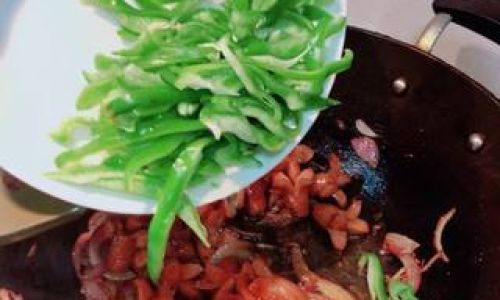
Chapter 4: Seasoning and Flavor Pairings
Crispy green peppers act as a flavor sponge, absorbing sauces, spices, and aromatics beautifully. Experiment with:
- Asian-Inspired: Soy sauce, sesame oil, rice vinegar, and chili flakes.
- Mediterranean: Oregano, lemon zest, feta cheese, and olives.
- Mexican: Cumin, lime juice, cilantro, and cotija cheese.
Advanced Technique: Finish with a spritz of acid (lemon, lime, or vinegar) to brighten the dish and cut through richness.
Chapter 5: Troubleshooting Common Issues
1 Soggy Peppers
- Cause: Overcrowding the pan, low heat, or excessive moisture.
- Fix: Cook in batches, use high heat, and pat peppers dry before cooking.
2 Burnt Edges
- Cause: Oil too hot or uneven cooking.
- Fix: Preheat the pan thoroughly and stir frequently.
3 Uneven Crispiness
- Cause: Inconsistent slicing thickness.
- Fix: Use a mandoline or sharp knife for uniform pieces.
Chapter 6: Creative Recipes and Serving Ideas
1 Crispy Green Pepper Tacos
- Fill corn tortillas with sautéed peppers, black beans, and avocado crema.
2 Stir-Fried Noodles with Crispy Peppers
- Toss peppers with udon noodles, soy sauce, and sesame seeds.
3 Roasted Pepper and Goat Cheese Salad
- Combine roasted peppers with mixed greens, toasted almonds, and balsamic glaze.
4 Crispy Pepper Chili Crisp
- Deep-fry pepper strips until crisp, then toss with chili oil and Sichuan peppercorns.
Chapter 7: Preserving Crispiness
1 Storage
- Store cooked peppers in an airtight container in the fridge for up to 3 days. Reheat in a hot pan to revive crispiness.
2 Freezing
- Blanch peppers in boiling water for 1 minute, shock in ice water, then freeze. Use within 6 months for optimal texture.
Chapter 8: Health Benefits and Dietary Adaptations
Crispy green peppers are:
- Low-Carb: Suitable for keto or paleo diets.
- Vegan/Vegetarian: Pair with tofu, tempeh, or legumes.
- Gluten-Free: Use tamari instead of soy sauce for gluten-free dishes.
Conclusion
Mastering the art of crispy green peppers is a journey of experimentation and attention to detail. By selecting the freshest produce, mastering cutting techniques, and tailoring your cooking method to the desired texture, you can elevate this vegetable into a culinary masterpiece. Whether you’re whipping up a quick weeknight stir-fry or impressing guests with a gourmet salad, the principles outlined here will ensure your green peppers steal the show. So grab your skillet, preheat that oven, and let the crispy adventures begin!
Word Count: 1,512
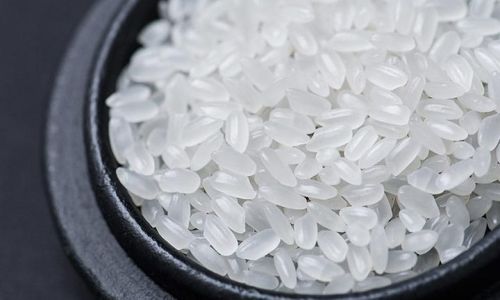

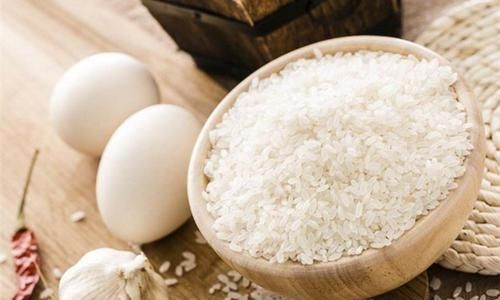
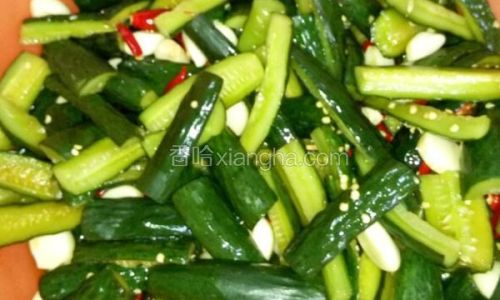
0 comments